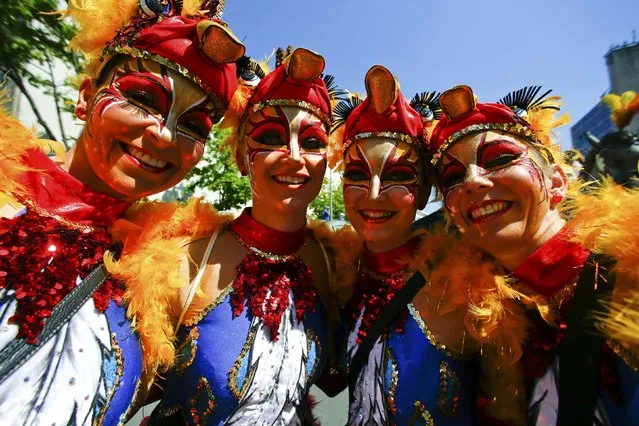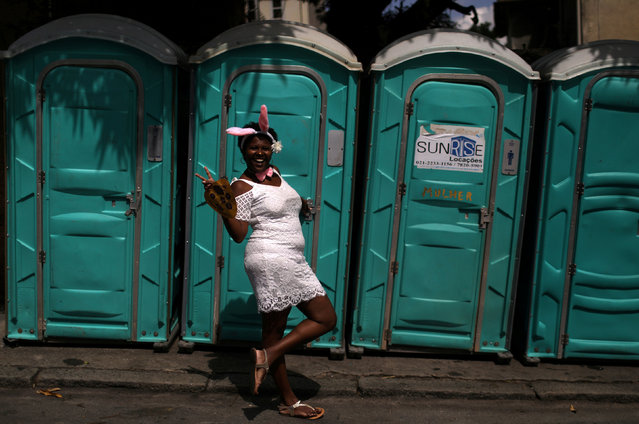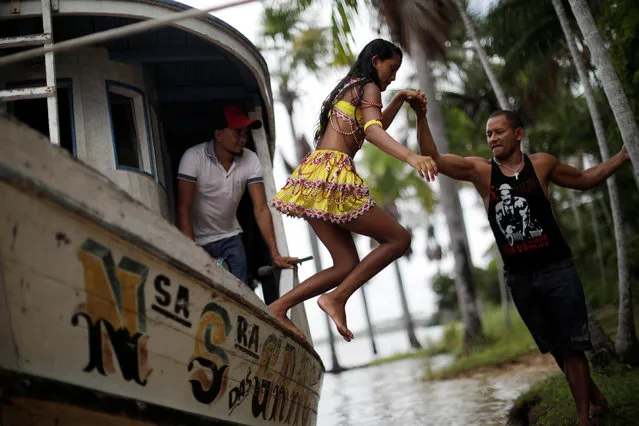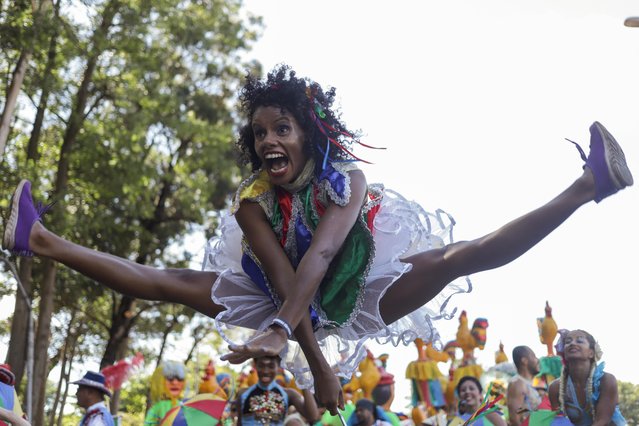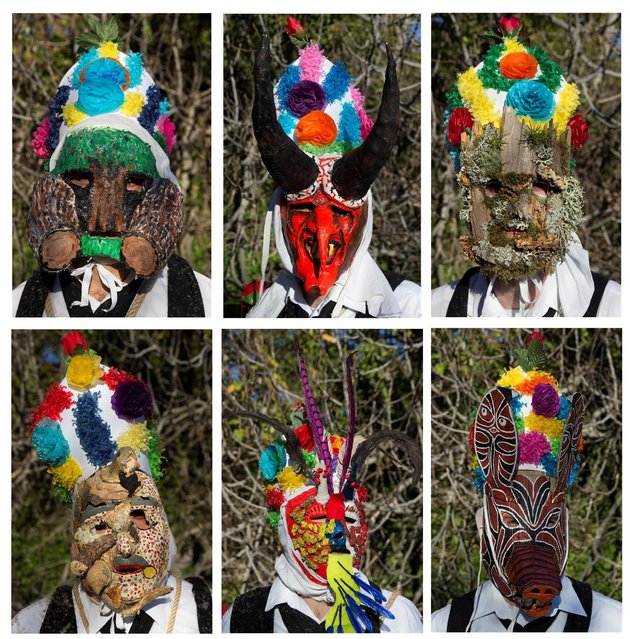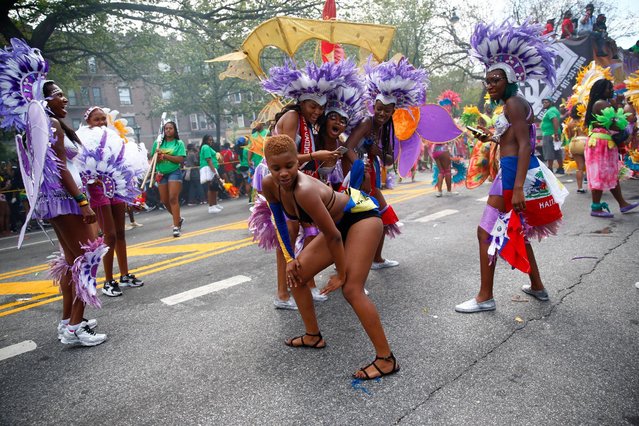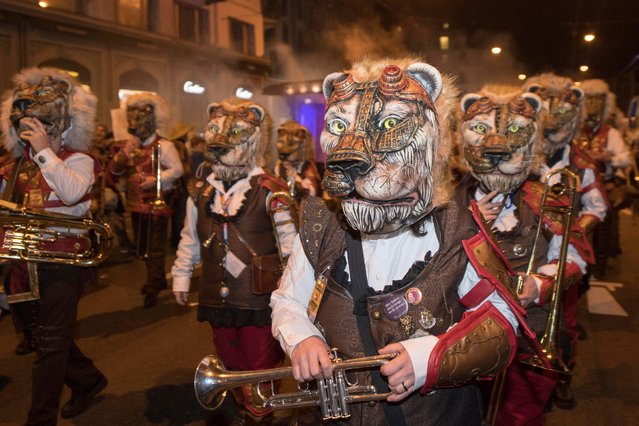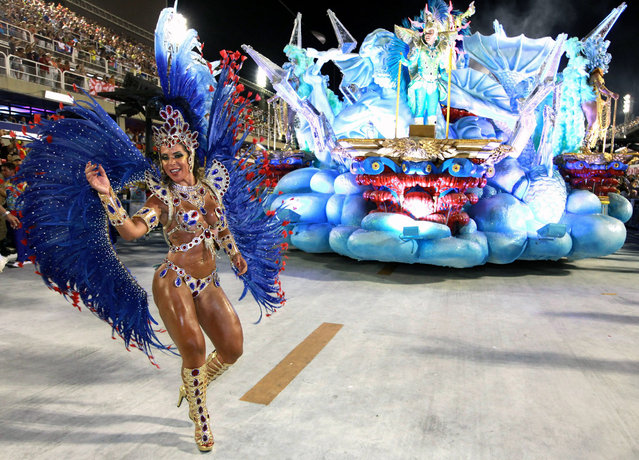
Members of the Uniao da Ilha do Governador Samba School perform during the first day of the Special Group Samba Schools parade of Carnival at the Sambadrome in Rio de Janeiro, Brazil, 07 February 2016. (Photo by Luiz Eduardo Perez/EPA)
09 Feb 2016 13:53:00,post received
0 comments

